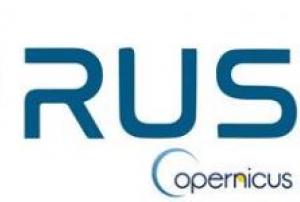Inundación
Definition
Facts and figures
Further information
UN-SPIDER Regional Support Offices with hazard-specific expertise
Related content on the Knowledge Portal
- The Space4Water Portal developed by UNOOSA present news, data and training information for all stakeholders involved in the space and water communities. It aims to provide access data and knowledge, to be creative and to realize their full potential in contributing to a world in which the availability and sustainable management of water and sanitation for all has become a reality.
Launched in October 2018, the portal is building up available resources. It already presents training material related to flood mapping, and automating the production of global water maps using Sentinel-2 imagery.Publishing institution: - ESA's Earth Observation Thematic Exploitation Platform (TEP) is a browser for satellite imagery and specific products on an environmental topic. The TEP platforms are divided into 7 categories: Coastal; Forstry; Geohazards; Hydrology; Polar; Urban; and Food Security. Each platform is a collaborative, virtual work environment providing access to EO data and the tools, processors and Information and Communication Technology resources required to work with them. TEP aims to bridge the gap between the users and the data and tools.Publishing institution:
This RUS Webinar provides an introduction to mapping water body extent from a combination of SAR (Sentinel-1) and optical satellite data (Sentinel-2). It demonstrates how to access the RUS Service and how to download, process, analyse and visualize the free data acquired by the Copernicus satellites. The ...
read more- The Global Flood Analyzer by the World Resources Institute is a tool to analyze flood risks. Parameter estimates for urban damage, affected GDP, affected population, annual expected urban damage and annual avoided urban damage for various three scenarios are visualized. Increased impact due to socio-economic change, climate change and future expected damages (2030) are compared against the base case of current annual expected damage. The scenarios are based upon the 5th Assessment report by the Intergovernmental Panel on Climate Change.
For the current scenario, hydrological data from 1960 through 1999 for generating flood inundations for 9 return periods were used, from 2-year flood to 1000-year flood, and 2010 GDP, population, and land use data for assessing flood impacts.
For future projections, 5 GCMs (Global Climate Models) from CMIP5 (Coupled Model Intercomparison Project Phase 5) projecting future flood inundations under two climate scenarios we used,...Publishing institution: - Publishing institution:
- Publishing institution:
- ICPAC drought maps present current rainfall anomaly (Standardized Precipitation Index (SPI)), vegetation anomaly, hydrological condition and rangeland drought monitoring maps. ICPAC Flood Hazard and Risk Maps present flood hazard maps, population estimates, near-real time rainfall 10 day maps from TAMSAT, flood frequency maps for 100 years.
Regional focus: Sudan, Ethiopia, Kenya, Tanzania, Somalia, South Sudan.
TAMSAT is the acronym for Tropical Application of Meteorology Using Satellite Data and Ground-Based Observations which is a rainfall estimation and quality assessment system providing high-resolution (~4 km) , 10-daily (or monthly) pan-African rainfall estimates.
The TAMSAT system is based on two cardinal data sets: 1) Rainfall estimates based on time-lapse analysis of the cloud-top temperature distribution and development observed every 30 minutes (every 15 minutes since July 2006) by thermal infrared (TIR) imagery from aboard the Meteosat...Publishing institution: - Publishing institution:
- The Database for Hydrological Time Series of Inland Waters (DAHITI) was developed by the Deutsches Geodätisches Forschungsinstitut der Technischen Universität München (DGFI-TUM) in 2013. DAHITI provides water level time series of lakes, reservoirs, rivers, and wetlands derived from multi-mission satellite altimetry for hydrological applications. All water level time series are free available for the user community after a short registration process.
Altimeter Data
For the estimation of water heights, multi-mission altimeter data are used. In detail, altimeter missions such as Topex (NASA, CNES), Jason-1 (NASA, CNES), Jason-2 (NASA, CNES, NOAA, EUMETSAT ), Jason-3 (NASA, CNES, NOAA, EUMETSAT ), GFO (US Navy), Envisat (ESA), ERS-1 (ESA), ERS-2 (ESA), Cryosat-2 (ESA), IceSAT (NASA), SARAL/AltiKa (ISRO, CNES) and Sentinel-3A (ESA) are used.Publishing institution: - GloFAS is an interactive map which presents *forecasted meteorological data*, *predicted hydrological data*, such as stream flows categorized by their probability of occurring (hydrological Return-period), *static maps* of lakes and reservoirs included in the model and *reporting points* where additional forecast information is available.
Access to real-time forecasts and forecast reruns from GloFAS is possible through a dedicated ftp service set-up by the GloFAS team upon request. Data is provided either as point time series or 2D grid series, both in netCDF format. Switch-over from version 1.0 to version 2.0 will be transparent to the user, with real-time forecasts from version 2.0 being automatically transferred from the release date, the 14th November 2018. , Requesting data for stations/points (only for river sections with upstream area larger than 1000 km2): Station ID(s), Name of station(s), Name of River(s), Name of country, Station latitude(s)/longitude(s), and Station upstream area(s) from provider (if available).
Requesting data for areas: Latitudes/longitudes of the bounding box regionPublishing institution:


